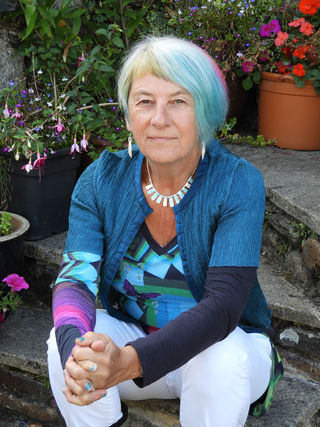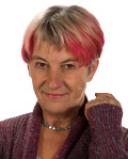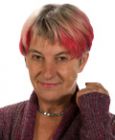Parapsychology
Out-Of-Body Experiences: Mine Is Finally Explained
Part 15: Returning to my own OBE
Posted October 24, 2019 Reviewed by Matt Huston
My first and most dramatic OBE happened back in 1970 and I have spent much of the rest of my life trying to understand it (Blackmore 1982, 2017). Now, almost 50 years on, I think I can. You may have read my description in the first post in this series, or a longer version in either my book, Seeing Myself, or online. Here I rewrite the same account with references to all the scientific ideas that now make it possible to explain OBEs naturally.
All these discoveries are a joy to me, but not so to everyone. Ken Ring (1980) was a pioneering researcher into near-death experiences, and he and I have been friends since I began research on OBEs. He read both my original description and this one; he did not like this one at all. He wrote “The first is gripping; the second, at least to me, is rather boring. The first experience changed your life; the second seems to have satisfied your quest to understand what happened to you.” (Ring 2016).

He’s right about it changing my life, but that is true whatever the explanation. And to me, explaining something so weird and strange in terms of neuroscience only adds to the pleasure, and to my enthusiasm to find out more. I doubt I would still be meditating every day were it not for that final mystical experience, and that is surely a lasting contribution to my life even if it can be naturally explained. So here is my new account:
“I was sitting cross-legged on the floor late one evening. Sleep deprivation had disturbed my vestibular system, making me feel drifting or floating, and had especially interfered with my right TPJ and with it my body schema (Chee & Chua 2007, Quarck et al 2006). Nearly four hours of holding out my arm for the Ouija board had confused my body schema even more. My attention kept wandering and my short term memory was reduced by cannabis (Earleywine 2002). REM intrusion threatened (Nelson 2010) and I was on the verge of hallucinating even without that puff of cannabis.
In the near darkness and with my eyes shut, the primary visual cortex, V1, was getting no useful information from outside. With my hyperexcitable cortex (Braithwaite et al 2013) already disinhibited by the combination of sleep deprivation and cannabis, it went into random firing, producing an illusory central light and the form constants of spirals and tunnels (Cowan 1982). Disinhibited motion detectors produced illusory movement and as the light grew bigger I seemed to move towards it. Memories of that day’s cycling through autumn trees intruded. I was moving through a tunnel of trees.
My auditory cortex was similarly hyperactive, producing random low-frequency repetitive sounds that drowned out the music. It sounded to me like the pounding of horses’ hooves. I was galloping fast down the tunnel towards the light.
When Kevin asked, ‘Where are you, Sue?’ I was brought up short. I tried to picture my own body and where it really was, but my prefrontal cortex was deactivated as the brain hovered on the edge of sleep (Muzur et al 2002). With my TPJ disturbed it was impossible to combine a body schema with vestibular and sensory input to give a firm sense of an embodied self (Blanke et al 2002). I was drifting and floating free. Confused, I tried to work out where I was. A view from above being easiest to construct from memory (Blackmore 1987b) this took over as my model of reality. I was near the ceiling and looking down.
The room and my two friends looked as I expected because the way they looked came entirely from my imagination. The scene was intensely vivid because I was hovering between sleep and waking with the images coming from the visual cortex, unclouded by defects in my eyes (Luna 2016). The ordinary world of the senses became ever more remote, while thoughts in the present moment were hyper-present and real (Metzinger 2005). Everything seemed real because this was the only model of reality my brain could create (Blackmore 1984b).
Normality might have been restored but for Kevin repeatedly asking what I could see, directing my attention to the imagined world. He asked about a silver cord. I saw a silver cord and enjoyed playing with it in this flexible, thought-controlled world (Leadbeater 1895, Muldoon & Carrington 1929).
My free-floating body seemed quite normal at first, based on the brain’s intrinsic model of the human body schema (Melzack 1989), but dissociated from the senses it began to drift, changing shape along with imagined worlds and actions as I set off and flew above the town. The roofs, gutters and chimneys I saw were just as I imagined them, not as they were. So were the cities, lakes, oceans and islands I saw. I laughed at the vivid ‘star-shaped island with a hundred trees’, believing it was a thought-form in the astral plane (Besent 1896, Findlay 1931) because that was the only theory I knew.
By the time I tried to return, all sense of coherent bodily self had gone. So I tried to reconstruct an image of myself sitting in the room as I remembered it. After about two hours without a functioning body schema, this was impossible. Trying to get inside the body it became too small, producing internal heautoscopy (Brugger and Mohr 2005). Trying to compensate it became larger and larger, taking in the room, the world and ultimately everything I could imagine, as occurs through meditation in the infinite space of the fifth jhana (Brasington 2015). Self and other became one as all aspects of self dissolved; embodiment, agency, and body ownership no longer held any meaning. Without a body to provide a stable first-person perspective, space became meaningless. Without attention to past or future, time became meaningless. Although I did not know it, this was a mystical experience (James 1902). Everything was perfect, as it must be without a constructed self to give either perspective or desires: the classic experience of nonduality.
With what little thinking ability remained I assumed that this was ‘it’; this was all that ever was or ever could be, until Kevin asked what more I could see and something strange opened up, a sense of vast consciousness all around. I was too tired to do more than glimpse this new vastness. In exhaustion, I seemed to face a choice, to stay in this marvelous, right-seeming, perfect state, or return to ordinary life. The choice made itself and the struggle began. After more than two hours of serious disturbance, this brain took some time to reinstate both body schema and self-image and even then confused my own body with others. When I opened my eyes I felt and saw greyish body-shapes around the others as well as myself; displaced body schemas that gradually faded until I was (more or less) back to normal. Yet nothing was ever quite the same again.”
So that’s how I now interpret my original OBE. Of course, there are still some outstanding mysteries and, as always in science, the more we learn the more questions we want to answer. But that’s the joy of doing science at all. I have not, in these posts, covered the tunnel experience, the silver cord and several other features more commonly found during near-death experiences, but I may return to them in future. For now I hope you have enjoyed this series of OBE stories.
References
Besant, A. 1896 Man and his bodies, London, Theosophical Publishing House
Blackmore, S. 1982 Beyond the Body, London, Heinemann
Blackmore,S.J. 1984b A psychological theory of the OBE Journal of Parapsychology 48 201-218 PDF Also reprinted, with new postscript, in Psychological Scientific Perspectives on Out of Body and Near Death Experiences. Ed: Craig D. Murray. NY Nova, 2009
Blackmore,S.J. 1987b A report of a visit to Carl Sargent's laboratory Journal of the Society for Psychical Research 54 186-198
Blanke, O., et al (2002) Stimulating illusory own–body perceptions. Nature, 419, 269–270
Braithwaite, J. J., Broglia, E., Bagshaw, A. P., & Wilkins, A. J. 2013. Evidence for elevated cortical hyperexcitability and its association with out-of-body experiences in the non-clinical population: new findings from a pattern-glare task. Cortex, 49(3), 793-805.
Brasington, L. 2015 Right Concentration: A practical guide to the jhanas, Boston, Shambala,
Blanke, O., & Mohr, C. 2005. Out-of-body experience, heautoscopy, and autoscopic hallucination of neurological origin: Implications for neurocognitive mechanisms of corporeal awareness and self-consciousness. Brain Research Reviews, 50(1), 184-199.
Chee, M. W., & Chuah, Y. L. 2007. Functional neuroimaging and behavioral correlates of capacity decline in visual short-term memory after sleep deprivation. Proceedings of the National Academy of Sciences, 104(22), 9487-9492.
Cowan, J. D. 1982. Spontaneous symmetry breaking in large scale nervous activity. International Journal of Quantum Chemistry, 22(5), 1059-1082.
Earleywine, M. 2002 Understanding Marijuana: A New Look at the Scientific Evidence, New York, Oxford University Press
Findlay, A. 1931 On the Edge of the Etheric or Survival after death scientifically explained, London, Psychic Press
James, W. 1902 The Varieties of Religious Experience: A study in human nature, Longman
Leadbeater, C.W. 1895 The astral plane: Its scenery, inhabitants and phenomena. London, Theosophical Publishing Society
Luna, L. 2016 Some observations on the phenomenology of the ayahuasca experience. In Luna, L. and White, S. (Eds) 2016 Ayahuasca Reader: Encounters with the Amazon’s Sacred Vine, Santa Fe, Synergetic Press, 690-771
Melzack R. 1989 Phantom limbs, the self and the brain. Canadian Psychology. 30, 1–16
Metzinger, T. 2005. Out-of-body experiences as the origin of the concept of a 'soul'. Mind and Matter, 31), 57-84.
Muldoon, S. and Carrington, H. 1929 The Projection of the Astral Body London, Rider & Co.
Muzur, A., Pace-Schott, E. F., & Hobson, J. A. 2002. The prefrontal cortex in sleep. Trends in cognitive sciences, 6(11), 475-481.
Nelson, K. 2010. The spiritual doorway in the brain. New York: Dutton.
Quarck, G., Ventre, J., Etard, O., & Denise, P. 2006. Total sleep deprivation can increase vestibulo‐ocular responses. Journal of sleep research, 15(4), 369-375.
Ring, K. 1980 Life at Death: A scientific investigation of the Near-Death Experience New York, Coward, McCann and Geoghegan
Ring, K. 2016, Personal communication by email 16.09.2016




